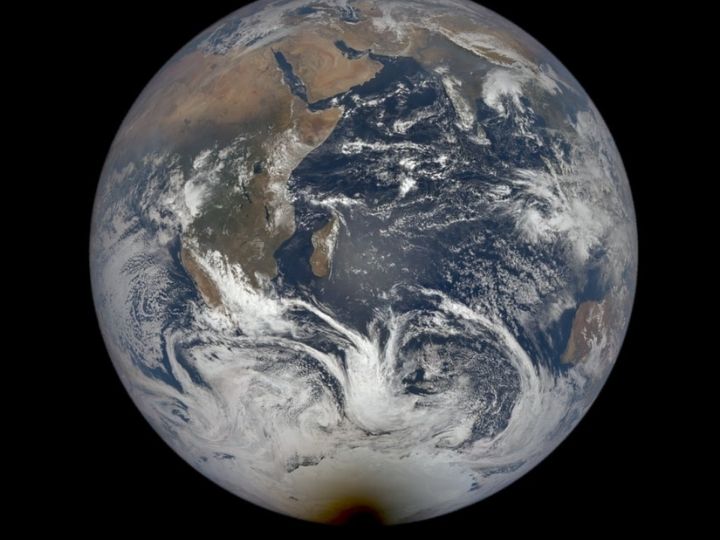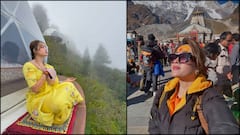How Did The Last Total Solar Eclipse Of 2021 Look From Space? Check Out NASA Images
NASA astronaut Kayla Barron has clicked images of the total solar eclipse that occured on December 4, from inside the international space station (ISS).

New Delhi: Have you ever wondered how a solar eclipse appears from space? NASA astronaut Kayla Barron has clicked images of the total solar eclipse that occured on December 4, from inside the international space station (ISS). NASA shared these pictures on its social media handles. In the image captured by Barron, the Russian segment of the space station can be seen.
"Saturday morning, the Expedition 66 crew squeezed into the Cupola to check out the total solar eclipse that occurred over Antarctica and the Southern Ocean," Kayla Barron said on Twitter. "Here the moon casts an oblong shadow on the Earth’s surface. It was an incredible sight to behold."
"Saturday morning, the Expedition 66 crew squeezed into the Cupola to check out the total solar eclipse that occurred over Antarctica and the Southern Ocean. Here the moon casts an oblong shadow on the Earth’s surface. It was an incredible sight to behold."
— NASA Astronauts (@NASA_Astronauts) December 4, 2021
– Kayla Barron pic.twitter.com/FktW8qsBIU
The cupola, berthed onto the Earth-facing port of the Tranquility module, is an ESA-built observatory module of the space station fitted with multiple windows, and designed for the observation of operations outside the station, as well as astronomical phenomena. The Expedition 66 crew squeezed into the Cupola to enjoy the mesmerising view of the total solar eclipse.
NASA also shared the scene as witnessed by the Deep Space Climate Observatory (DSCOVR) spacecraft, a space-weather monitoring spacecraft. It captured the Moon's shadow as it passed over Antartica on December 4. The shadow is shaped like a cone extending into space, the circular cross-section of which is most easily seen during a solar eclipse. In the image, one can see a round, dark shadow on the continent. This occured as the moon blocked the Sun's light.

The space agency said on its website that the image of our home planet shows how Earth looked from more than 1.5 million kilometres away during the total solar eclipse in Antarctica, the only place where the total phase of the solar eclipse was seen.
The partial phase of the solar eclipse was visible in southern parts of Australia, New Zealand, Africa, and South America, and the Pacific, Atlantic and Indian Ocean.
The solar eclipse peaked at around 2:44 am EST (1:14 pm IST) on December 4. The totality phase lasted for two minutes, and during that period, the entire solar disk was shielded by the Moon. This was followed by the reappearance of a tiny sliver of the Sun.
When the New Moon (position of the moon in which the Sun and Earth are on its opposite sides) comes between the Sun and Earth, and casts the darkest part of its shadow, called the umbra, on Earth, a total solar eclipse occurs.
The Moon covers the entire disk of the Sun during a total solar eclipse. A total solar eclipse is visible only in those regions of the world, which are located in the path of the Moon's umbra.
Related Video
Women's Day Special: Male Colleagues Share Their 'Mann Ki Baat' for Female Teammates in the Newsroom





































